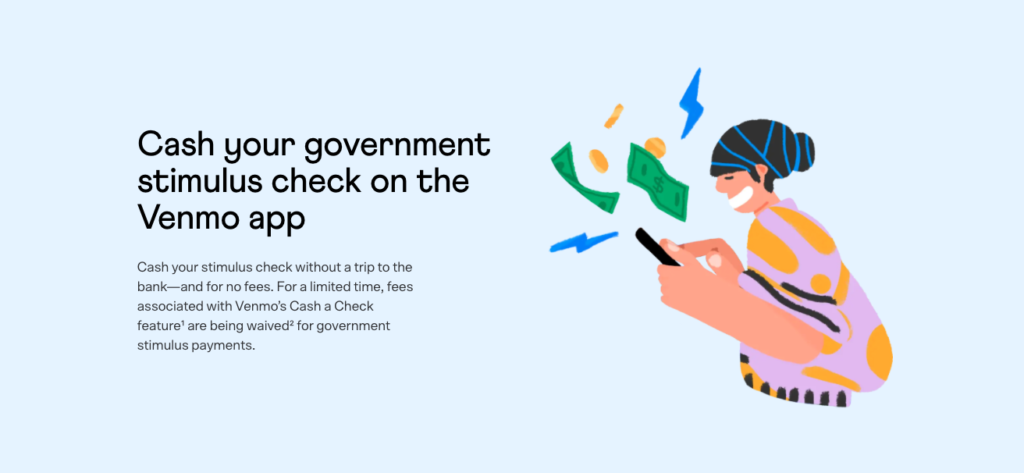
Venmo‘s new launch is making it easier for users to deposit their paper stimulus checks. The PayPal-owned company unveiled a new feature called Cash a Check that enables users to do just that– cash paper checks in the Venmo app.
Eligible users can take a picture of their check, Venmo reviews the check, and the funds are usually approved within seconds and available in the user’s account in a few minutes (though the company disclosed the approval may take up to an hour).
“We know that with health and safety top of mind for many, having a safe way to access stimulus payments is essential for many of our customers, especially those who are receiving paper checks and traditionally would have to visit a physical check-cashing location,” said Venmo SVP and CM Darrell Esch. “By introducing the Venmo Cash a Check feature, we are not only enabling our customers to access their money quickly and safely from the comfort of their own homes but are also waiving all fees for cashing government issued checks to ensure customers can use their stimulus funds to pay for the things they need most.”

Users should not expect to be able to deposit the check they received from their grandma for Christmas, however. The initial launch is limited to printed payroll and government checks. In fact, the launch seems to focus on helping users cash their stimulus checks.
As Esch noted, fees for depositing government-issued checks will be waived for a limited time, until Venmo has cashed a total of $400,000 in government-issued checks. After that point– and for printed payroll check deposits– users face a fee of 1% to 5%, depending on whether the signature is hand-signed or pre-printed.
The steep fees are owed to the risk associated with remote deposit check capture. In addition to the risk of fraud, Venmo now exposes itself to costly human errors, such as unintentional efforts to deposit a single check multiple times.
Today’s launch is the latest effort in a series of moves Venmo has recently made to compete with the rise in challenger banks. Last October, the company launched a credit card offering and, a few months earlier, unveiled a new tool to help micro-businesses accept payments.
